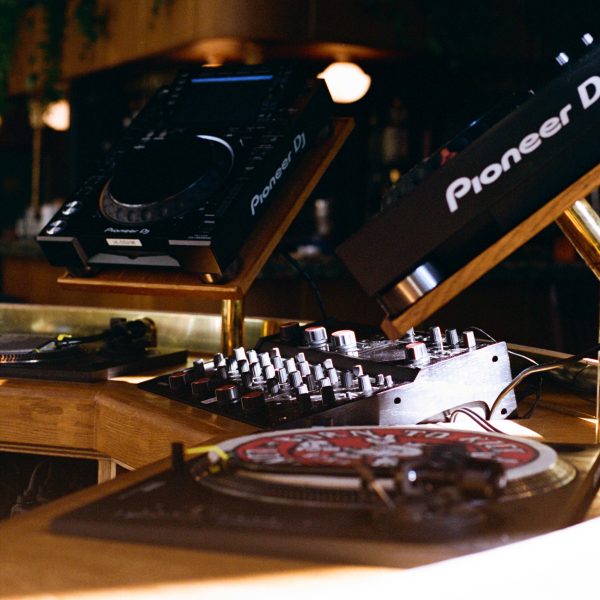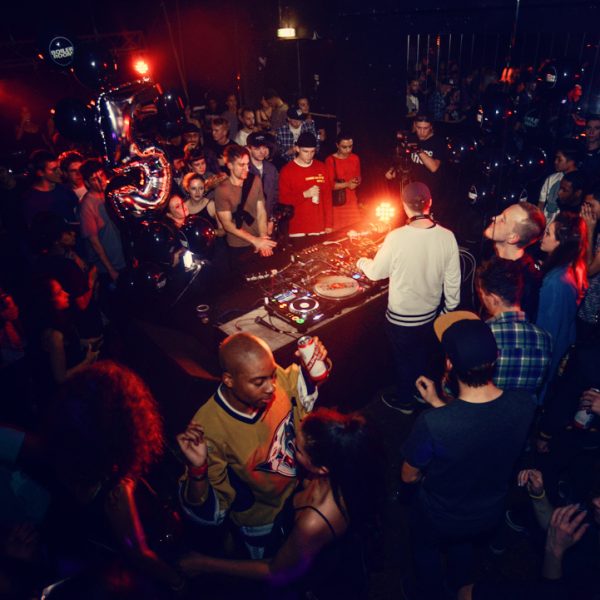Finger drumming now
These early figures helped create the conditions for the global community of finger drummers and fans that we see today. “The finger drumming scene could, in a sense, be described very similarly to the scratching and turntablism scene,” said Spinscott.
“Over the past decade or so, it has gained popularity online via social media and video sharing platforms, and thanks to the incorporation of pads into more and more gear, has made its way into the DJ and live performance realm. The scene has grown to include events, showcases, competitions, and sub-communities based on genre, style, method, etc. As a newer performance form, there are a lot of forums, tutorials, lesson programs, and other resources that attract and welcome new players to the game.”
Alex Sonnenfeld runs the annual Sample Music Festival, which, along with the likes of A-Trak’s Goldie Awards in the US and the King Of Flip battle in Japan, is a meeting place for finger drummers, turntablists and digital music performers. Sample Music hosts the Finger Drumming World Championship, which this year was won by Steve Nash from Poland. The judging panel included key figures like Wendel Patrick, Beat Matazz, Gnarly and Clockwerk.
Sample Music Festival is a hub for all types of competitions and workshops stemming from turntablism and digital music performance. But Alex also uses Sample Music as a platform for his near-life-long mission to get these styles of performance taken seriously by music institutions and the education system.
“Our mission is to establish turntablism, finger drumming, syntablism, artablism, datablism and controllerism on an academic and public stage,” he said, referring to the various strands of digital music performance that have grown out of turntablism. “Eventually it should be possible to learn these new instrumental forms at state music schools and universities. This would increase social acceptance and make it easier for many people to turn their passion into a profession.
“It is an absolute travesty that only a small handful of people can make a living from music in our community,” he went on. “I have personally seen far too many dedicated artists who pour forth innumerable hours, often eight hours a day, into their craft only to not be able to support themselves financially. To think that these same people could be provided jobs as educators, composers, and players for bands and orchestras would truly be an amazing opportunity for our community.”
The internet has played an enormous role in drumming up buzz for finger drumming. “I think a huge part of the community is just online,” Gnarly said. “So like with Instagram and TikTok now as well. These are big places where everyone from all over the world is able to share work and see each other’s stuff going on.”
“My goal is to increase awareness of finger drumming at the largest scale possible, which is why I’m doing everything on the internet right now,” said Dragon, a drummer-turned-finger-drummer and teacher, who runs online classes and a YouTube channel. “Especially with viral social media platforms like TikTok, I foresee finger drumming becoming a lot more popular on a global scale within the next few years.”
Leading the charge is the US finger drummer and producer Beats by Jblack. With over a million followers across Instagram and TikTok, he is probably the most visible finger drummer working today (excluding Fred again.., who’s known predominantly as a recording artist). It isn’t difficult to see why this has happened. In addition to being supremely skilled, Jblack, who’s cited AraabMuzik as a key influence, has a breezy and confident style of hip-hop performance.




